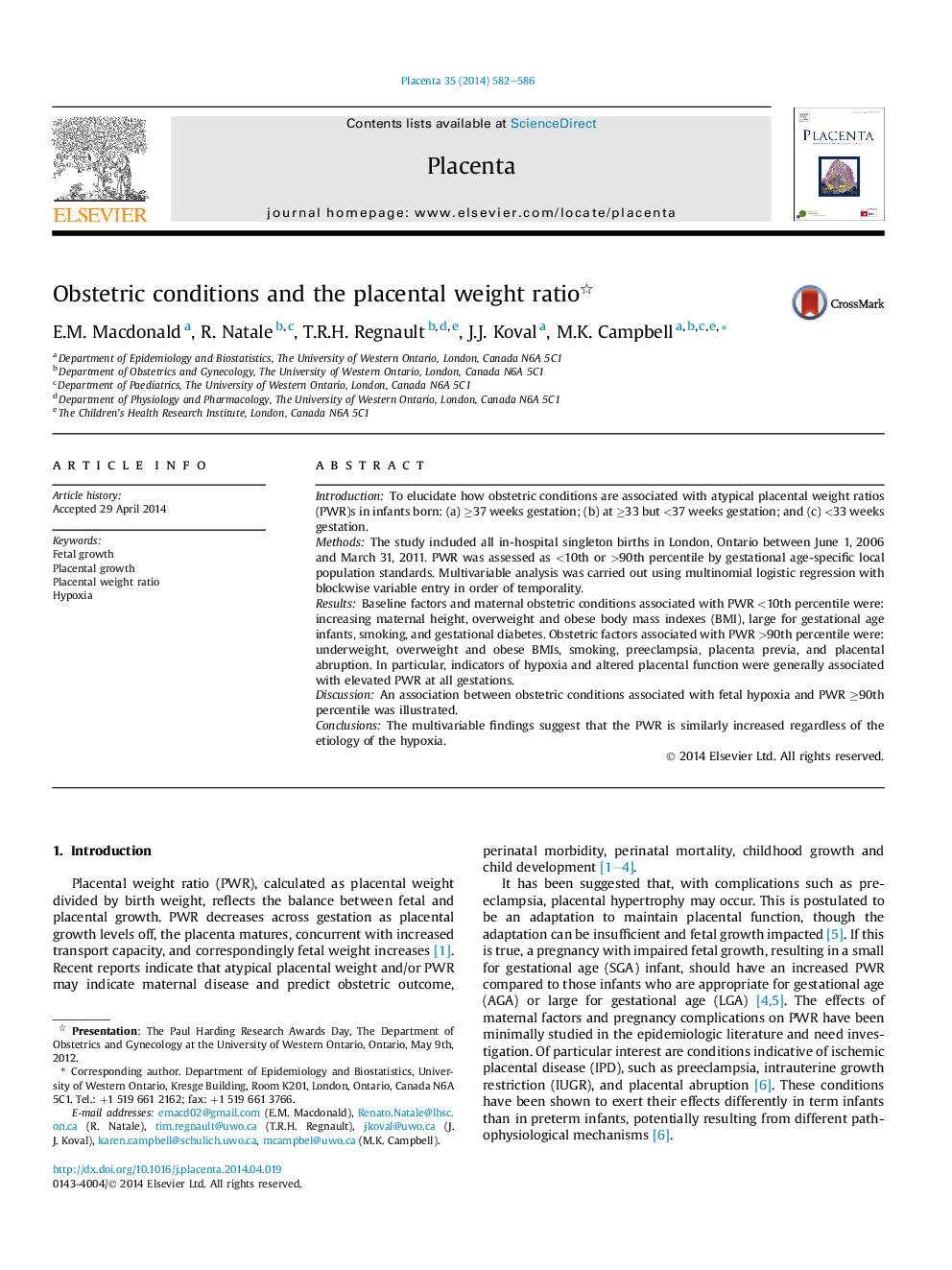| Article ID | Journal | Published Year | Pages | File Type |
|---|---|---|---|---|
| 5895396 | Placenta | 2014 | 5 Pages |
â¢We included all singleton births over a 5-year period in London, Ontario.â¢Obstetrical conditions were generally associated with a placental weight ratio >90th percentile.â¢The placental weight ratio is similarly increased regardless of the hypoxia etiology.
IntroductionTo elucidate how obstetric conditions are associated with atypical placental weight ratios (PWR)s in infants born: (a) â¥37 weeks gestation; (b) at â¥33 but <37 weeks gestation; and (c) <33 weeks gestation.MethodsThe study included all in-hospital singleton births in London, Ontario between June 1, 2006 and March 31, 2011. PWR was assessed as <10th or >90th percentile by gestational age-specific local population standards. Multivariable analysis was carried out using multinomial logistic regression with blockwise variable entry in order of temporality.ResultsBaseline factors and maternal obstetric conditions associated with PWR <10th percentile were: increasing maternal height, overweight and obese body mass indexes (BMI), large for gestational age infants, smoking, and gestational diabetes. Obstetric factors associated with PWR >90th percentile were: underweight, overweight and obese BMIs, smoking, preeclampsia, placenta previa, and placental abruption. In particular, indicators of hypoxia and altered placental function were generally associated with elevated PWR at all gestations.DiscussionAn association between obstetric conditions associated with fetal hypoxia and PWR â¥90th percentile was illustrated.ConclusionsThe multivariable findings suggest that the PWR is similarly increased regardless of the etiology of the hypoxia.
